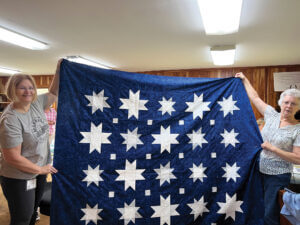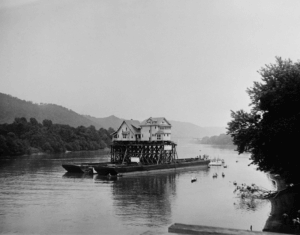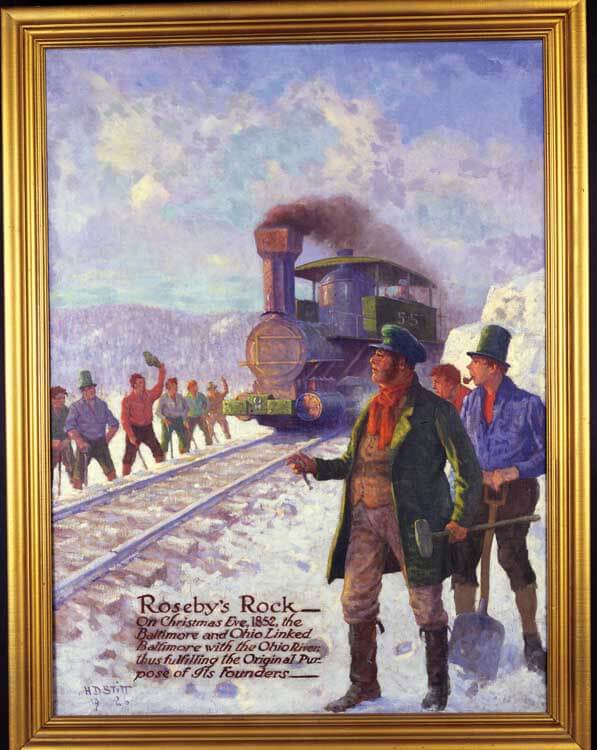
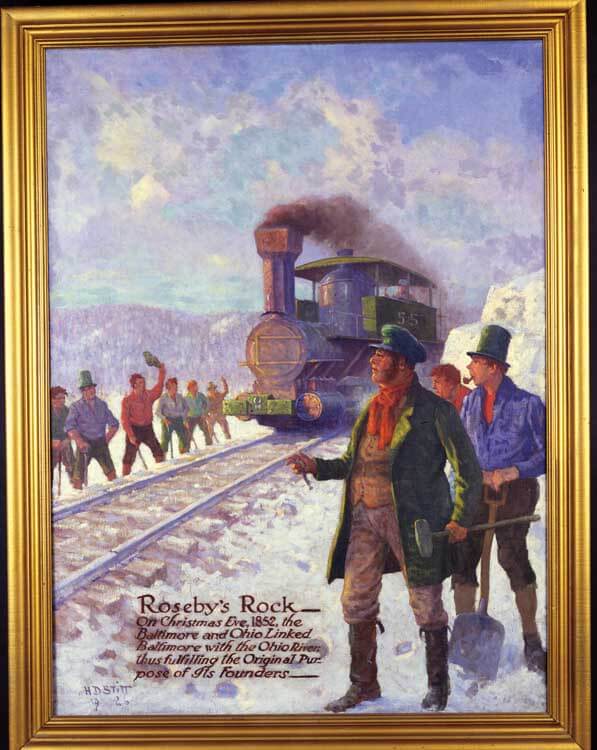
A name misspelled only adds to the mystique of an obscure West Virginia monument.
We can’t know just how cold it was in the Northern Panhandle on Christmas Eve, 1852. We can guess it was wintry. We can also guess that, although their breath surely rolled thick in the air, the group of tracklayers working 15 miles south of Wheeling, Virginia, stopped noticing the cold at all around 6 p.m.
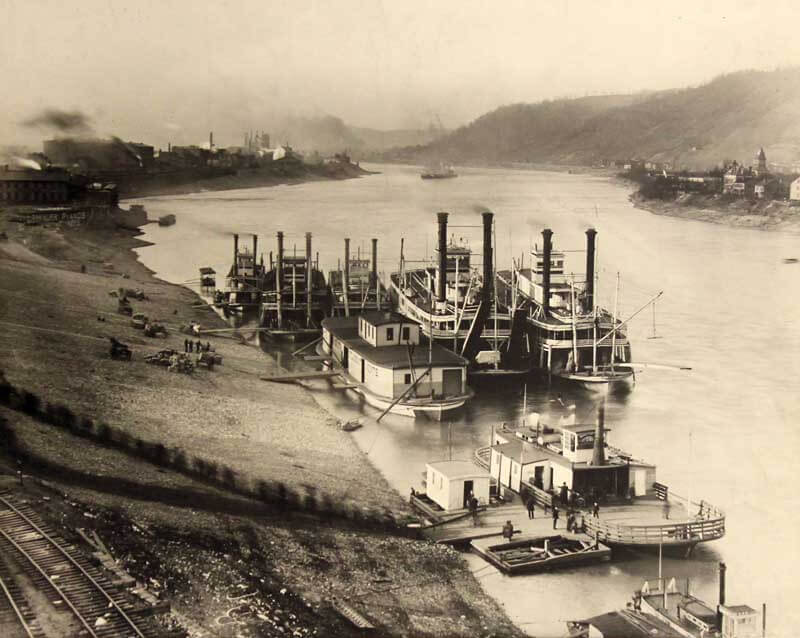
It had come time to drive the last spike into the last section of rail connecting the Atlantic Coast with the Ohio River—11 tunnels, 113 bridges, 379 miles, and just short of 25 years after construction had begun.
Superintendent Roseby Carr surely raised his spike maul overhead with extra flourish and slammed metal to metal several times to drive that final spike home.
“We have now laid the last bar of the long link of railroad which connects the Chesapeake Bay and the waters of the Ohio,” Carr was reported in the Wheeling Daily Intelligencer to have shouted to his crew. He raised cheers for the B&O Railroad’s president and its chief engineer. “May they both live to make many more connections of the western waters and the seaboard.” After cheers for Carr himself, the tracklayers retired to their camp.
Maybe it was the chill, or exhaustion, or midholiday stupor, but the moment seems a little understated as reported in the newspaper on the 28th. Once the new year was rung in, though, the city readied a fete proper to the occasion.
“For near a quarter of a century, the project of connecting the city of Baltimore with the Ohio River at Wheeling has been claiming the attention of our citizens and the public,” crowed the Intelligencer more exuberantly on January 4. “In the year 1853 (the builders of this railroad) stand upon the banks of the Ohio, the first comers of the band of pioneers who have for years past been seeking to tap the mighty valley of the West and draw its rich products into the lap of the Atlantic.”
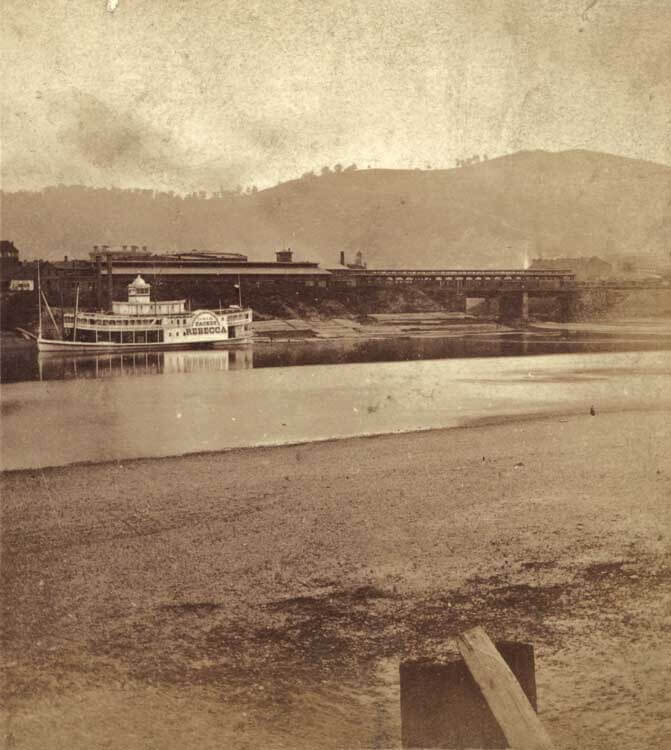
It’s easy to understand the excitement. The opening of the B&O between Baltimore and Cumberland a decade earlier had greatly shortened the journey between Wheeling and its nearest port city. Even so, passenger travel to Baltimore required two days’ laborious coach ride to Cumberland before the final day’s journey by train. The full trip would now be accomplished in 16 hours and in comfort. As for freight, Baltimore merchants would be able to ship goods west from the Eastern seaboard—and receive the “rich products” of the West for distribution—in far greater quantity and far more affordably than before.
A lavish celebration was planned for January 11 and 12 in Wheeling. But Baltimore started celebrating the morning of the 10th, when 500 invited passengers boarded two trains for a jubilant journey. “The refreshment cars are each fitted up with tables running through the centre, with servants to supply the wants of the throng of visitors,” wrote a Baltimore journalist along for the ride. The train cars were new and “handsomely decorated with flags,” and Baltimore’s celebrated Independent Blues Band entertained the riders. B&O President Thomas Swann and a bevy of other company officers took the trip, along with no fewer than four Photographs of Wheeling from the 19th and 20th centuries romance the steam engine. former mayors of Baltimore—the sitting mayor was regrettably detained. Even the governors of Maryland and Virginia joined the procession. Outside the train, spectators lined the tracks by the thousands to cheer the trains’ departure and greeted them at every station.
The trains passed midday through Harpers Ferry, Virginia—soon to be infamous—and stopped at Martinsburg at 3 p.m. for wood and water. “The whole population seemed to be assembled at the depot, who received us with every demonstration of joy.”
Riders visited the refreshment car continually through the day, with one toast in particular noted by the reporter: “‘Napoleon conquered the Alps and Swann the Alleghanies.’ This was drunk with gusto.” The trains arrived at Cumberland at 6:30 p.m. and stopped for a celebratory supper, leaving around 10 p.m. with plans to stop for breakfast at 6 a.m. on the 11th in Fairmont.
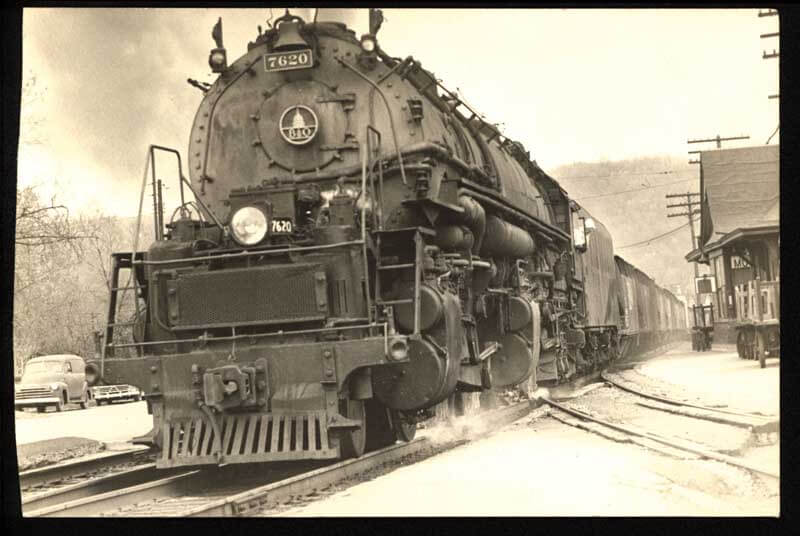
The Intelligencer picks up the coverage. Thousands were converging on Wheeling by steamboat, by coach, by horse, and by foot to celebrate “one of the greatest works of the age.” The trains from Baltimore were expected mid-afternoon but, due to an axle-related delay, the first train did not arrive until 2 a.m. on the 12th. The celebrants’ excitement could not be dampened. “Several hundred of the citizens of Baltimore have been conducted to the McLure House, led by Capt. Holland’s Band of Independent Blues, whose soul-stirring music peals out upon the morning air, which wafts back a heartfelt welcome from all our citizens.”
The midday ceremony at the courthouse inspired flowery speeches from B&O President Swann, Governor Johnson of Virginia, and Governor Lowe of Maryland, all of that launched by a welcome from Wheeling Mayor Morgan Nelson.
“You have constructed, across a chain of mountains which to our fathers seemed hardly less formidable than the Alps, a highway bringing your beautiful and rising city into close proximity to the valley of the Ohio,” Nelson beamed, addressing B&O’s Swann. “And hereby the products of our fields and of our workshops, which used to find their way to your city by a tedious and circuitous voyage … will now be transported thither in a single day. Goods from the East, too, will be received with the like despatch.”
A thousand people attended a lavish banquet at Washington Hall that evening. The toasts, published in the paper the following day, must have gone on for hours. Among them was one in which the superintendent who had driven the last spike, Roseby Carr, was heralded as “parson at the nuptials of the Ohio and the Chesapeake.”
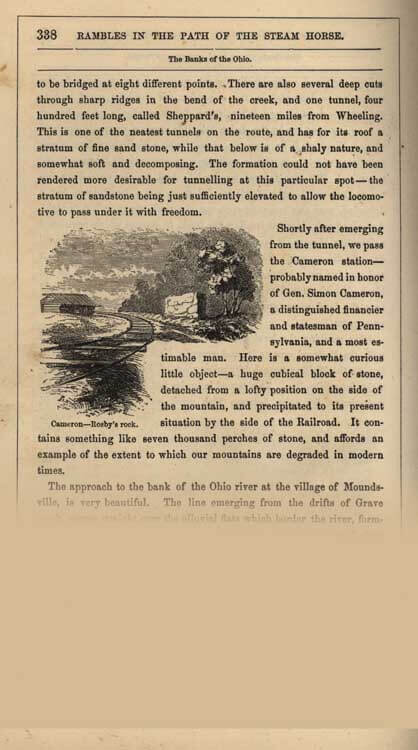
No one could have foreseen the economic impact the new line would have on the Ohio Valley and the surrounding region. The U.S. had been exporting great quantities of wheat flour to Great Britain, B&O historian John Hankey explained in a 1992 interview, in just one example of the line’s immediate commercial boost. “It cost a dollar to buy a barrel of flour at Wheeling,” Hankey said, and $4 to take it across the mountains by wagon to Baltimore—so a merchant would pay $5 for that barrel of flour on the docks at Baltimore, of which just $1 was the farmer’s.
After the rail line opened, the B&O charged only $1 to take a barrel of flour from Wheeling to Baltimore. “That meant the farmer got to keep four dollars. All of a sudden, the agriculture economy of western Virginia takes off,” Hankey says. “Suddenly Wheeling begins to grow as an interior port, because people know if they can get their flour to Wheeling, by God, they can get it to the Eastern seaboard and get a good price for it. It changed the way people in western Virginia lived.”
An obscure but enormous landmark of the B&O’s last spike stands in Marshall County.
Beside the location of the joining of the rails, some seven miles south-southeast of Moundsville alongside Grave Creek, an enormous boulder happened to stand alone facing the tracks, 22 feet high and 68 feet wide with a wide, smooth face—a boulder just begging to serve as a monument.
At some point, someone was commissioned to commemorate on that rock face the driving of the last spike.
“ROSBBY’S ROCK. TRACK CLOSED CHRISTMAS EVE, 1852. HOBBS & FARIS,” reads the monument.
“My understanding was that it was the B&O railroad that did that,” says Sean Duffy, a past archivist at the Ohio County Public Library in Wheeling who has studied the monument and the events surrounding it. “I think it was done around the time of the completion of the line.” Duffy is not sure who the Hobbs and Faris are who seem to have done the carving but, as a local historian, he has thoughts on the subject. “Both of those names are prominent Wheeling names. Faris was an architect in Wheeling who designed a lot of our buildings, and J. H. Hobbs, Brockunier and Company was a major glass plant.”

“You have constructed, across a chain of mountains which to our fathers seemed hardly less formidable than the alps, a highway bringing your beautiful and rising city into close proximity to the valley of the Ohio.”
Morgan Nelson
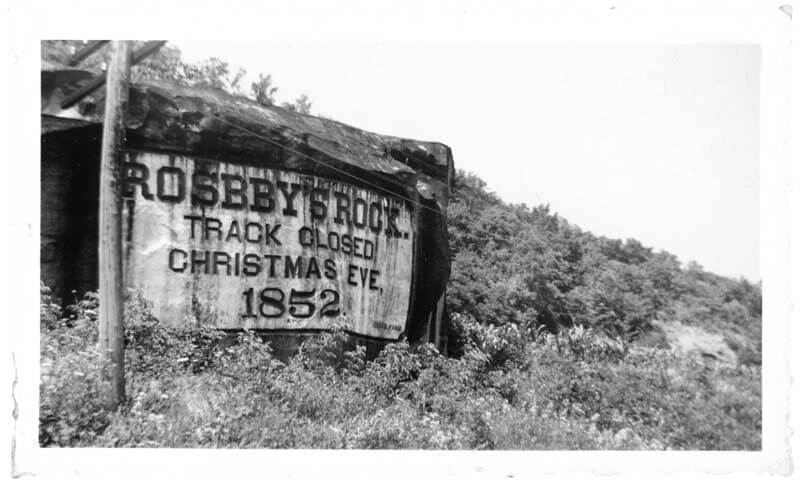
Carr’s unusual first name is often spelled both Rosby and Roseby, but the spelling “Rosbby,” as carved on the rock, has raised questions over the years. An 1899 newspaper story speculated that liquor was involved, but Duffy doubts it. “The carving would have taken a long time. We’re talking about 2-foot-high letters carved 2 inches into the rock. It would have taken them days or weeks to do. It’s unlikely a careless mistake.”
At the height of B&O service, eight passenger trains and eight to 12 freight trains are said to have passed through the adjacent community of Rosbys Rock each day. Passenger service was discontinued in 1957 and freight service in the early 1970s, and the tracks were removed after that. “It’s more or less a walking trail now,” Duffy says. “If you drive out there, there’s a gravel path wide enough for a car, and you can drive right up to the rock.”
It’s interesting to note that 60,000 people visit the place in Utah each year where the Golden Spike was driven to connect the rails of the first Transcontinental Railroad in 1869, reducing travel time between the Atlantic and Pacific coasts from months to days.
Roseby’s Rock marks a moment almost two decades earlier that, for its time and region, was similarly transformative. “This rock deserves more attention,” Duffy says.
written by Pam Kasey



